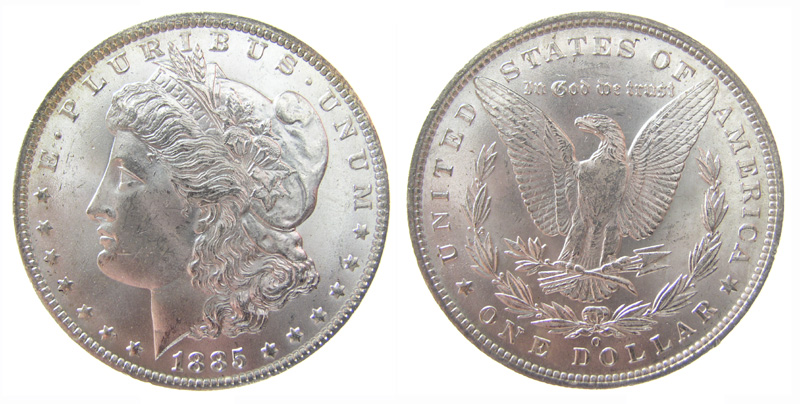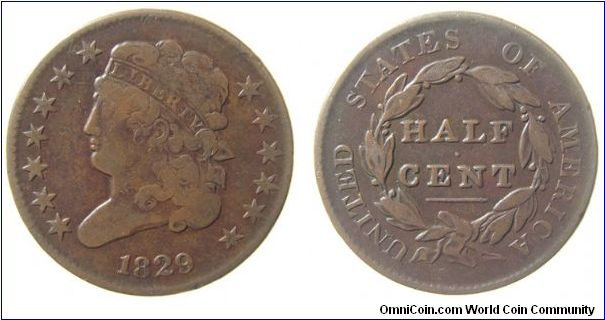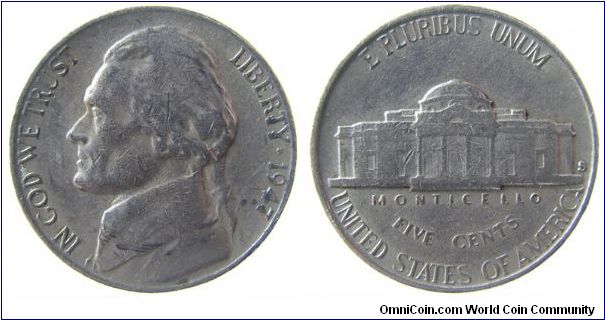-
Posts
1,301 -
Joined
-
Last visited
Content Type
Profiles
Forums
Gallery
Events
Articles
Posts posted by syzygy
-
-
Hey Guys here is another coin of unknown origin. If anybody could help me as to the Country that this coin belongs to it would be a great help. It has arabic writing as you can see by the picture, palm trees on one and wheat on the other. The reverse has more arabic and a numerical 1. The pictures arent the best but thank you.
The one with the three wheat straws is an Israel 1 agorah (1958-1980). KM # 24.1
The one with the palm tree is an Israel 10 agorot (1960-1977). KM # 26
I can't read Hebrew or convert the calendar, so I don't know the exact dates. Also, there are some varieties that might required both sides, but I think the Krause numbers are correct.
(Krause numbers refer to the 2005 Standard Catalog of World Coins)
-
Cool, I actually guessed right! Thanks for sharing!
I should probably change it..from what I have read, this young Emperor's short reign was quite a disaster.
-
Recently, I gave my favorite Constantine I to some friends as part os a wedding gift. I printed up a nice little pamphlet to go with the coin based upon my own research and thought you guys might enjoy checking it out also. Those who don't know much about these ancients, may find the narrative interesting. While I have a lot of interest in late Roman Empire coinage, I am by no means an expert. So, the many, with more knowledge on the subject, may be able to make corrections and additions.

AD 306-337, Bronze follies, 23 mm.
Constantine I
The emperor Constantine has rightly been called the most important emperor of Late Antiquity. His powerful personality laid the foundations of post-classical European civilization; his reign was eventful and highly dramatic. His victory at the Milvian Bridge counts among the most decisive moments in world history, while his legalization and support of Christianity and his foundation of a 'New Rome' at Byzantium rank among the most momentous decisions ever made by a European ruler. The fact that ten Byzantine emperors after him bore his name may be seen as a measure of his importance and of the esteem in which he was held. (from http://www.roman-emperors.org)
Yes, it’s real. The Romans were particularly proficient at coinage and many examples have survived. Individuals have painstakingly researched and cataloged varieties. Authenticity is supported when a specimen, such as this one can be found in significant numbers and cataloged. For a coin from this era, refer to RIC (Roman Imperial Coinage). I want, but do not yet have any of the RIC volumes, but Volume 6, p519, 61b should be a close match. Reference works by Sears and others have also cataloged this type.
Coined during the rule of Constantine I, it was manufactured during the period 306-337 AD, nearly 1700 years ago. You can hold the same coin in your hand that was used 1700 years ago. The denomination is called a follis.
Reading the Obverse:
The Romans did not use too many spaces to separate the words on the coin so they all appear to run together. The inscription reads “IMPCCONSTANTINVSPFAVG”, standing for: Imperator Caesar Constantinus Pius Felix Augustus
IMP – Imperator (Emperor)
C - Caesar
CONSTANTINVS – His family name, “Constantine”
PF - Pius Felix (loosely, holy and joyous)
AVG – Augustus (remember, the Roman ‘V’ equates to our modern ‘U’). Augustus is the most distinctive of imperial titles and is used only by the reigning emperor or his family.
The bust is, of course, Constantine and is described as laureate, draped and cuirassed, facing right. Draped, refers to the presence of the garment worn. Laureate and cuirassed, refers to the style of the “headband” worn.
Reading the reverse:
The inscription reads “IOVICONSERVATORIAVGGNN”. Separated, it reads: IOVI CONSERVATORI AVGG NN, and stands for “IOVI CONSERVATORI AUGUSTORUM NOSTRORUM”. In this case, the GG and NN indicate plurals. The inscription translates – (to) Jupiter, conservator of our emperors.
The devices feature the god,Jupiter, standing with a scepter, holding Victory on a globe. An eagle below with a wreath in its beak.
In the exergue (the area near the bottom of the reverse), you can see “TSE”, standing for Thesalonica – the mint that manufactured the coin.
-
Who's your avatar guy? I'm certain on early 200s, but can't seem to pinpoint it on someone. Elgabal?

Elagabalus
AD 218-222
OBV: IMP CAES ANTONINVS AVG, laureate draped bust right
REV: FIDES EXERCITVS, Fides seated left holding eagle & standard, another standard at side
-
This medal was initially in a 2003 mint set dedicated to Bucarest City Museum containing proof coins of 1, 5, 10, 20, 50, 100, 500, 1000 and 5000 lei.
The medal is from 800/1000 silver,28 mm, 10 grams in Proof quality, mintage of 10.000 ex.
Official price of mintset was in 2003 400.000 lei (aprox 20$). Only the medat today is in value of 20$... nice aquisition!
cool!
-
I just wondered... you know how sellers come up with such figures, such as 10% offstruck, 25%, 50% etc.
Is there any precise way of calculating how much the offstrike is off by?
There are a couple of precise ways to calculate the "offstrike", but it is equivocal that there is a best way. Consider this one: An uncentered, broadstrike and typical of what we call off-center.

Because the collar has moved when it was struck, it is mishapen, and therin lies the problem. If it were a misaligened die, the calculations would be straightforward. I think of three approaches:
1. Given the total area of metal, use the percentage that has the imprint of the die. Problem is, the total area of coin will vary greatly between different specimens.
2. Use the percentage of the "normal" die imprint that is present (the part isolated by the black line).
3. Given the size of the normal die imprint, aligned to the center of the "in collar" portion of the strike (the blue circle area), use the percentage having the die imprint. Like 1, but standardizing the area to the normal size of the coin.
I could make a case for all three, but 2 seems to be the most reasonable to me.
BTW: This example fits my own preferences very well. For me, it is not a matter of the more off center the better (although when only the date is visible, it is quite an attraction). I like them largely off center (missing major design elements) with a real clear date area so that there is no confusion about the presence or absence of a mint mark.
-
In 2003 the National Bank of Romania put out a mint set comprising the "Sutu Palace Bucharest" silver medal. This may be what you have, the medal from the mint set.
Thanks for all the replies. Sounds about right. I have been looking online..just because not knowing is a pain...but no luck yet...
The National Bank and State Mint looked like they were going to be good hits.
http://www.monetariastatului.ro/index-en.html
But nothing yet.
-
Nowadays, coin designs are not taken very seriously, as they are usually flat, or reeded. The reason why? Probably because there is no need for such high technology counterfeiting devices like the 1700-1800 period. During those times, crude strikes existed and such edge "protection" was possibly needed as a counterfeit device.
I recall reading that another reason for reeding the edges (at one time) was to discourage shaving the coin - the idea being that removing a small amount of precious metal from a large number of coins would gain you a significant amount of precious metal.
Yeh, I agree that not enough edge attention is being paid by designers. I like the ornate edge on this common 5 rupee (India-Republic, KM#154.1)

-
Tell us your vote!
I like them both. The silver gets my choice. It is just so cool being that small. A nice one with the outlined star is on my wanted list.
-

A new acquisition. I have very little experience with Morgans and wonder how others see this one.
-
After selecting two coins during my last visit to one of my favorite coin shops, I hit the three boxes of six-for-a-buck world coins – it’s become a ritual. In this case, thanks to a post here about shapes as a topical, I was gathering up a few multi-sided varieties. Then I spotted this oddball. It looked like a proof medal of some kind. While checking out, the dealer (who is always extremely friendly) told me that it should not have been in the “junk” box. I asked him what it was and he replied that he thought it was silver and gave it a drop on the counter (the ring test). “Silver?? Really? - nahhhh” I was perfectly willing to pass it up and offered to do so, but he said no, so it came back with me.
Anybody recognize it? I did some searching on the net and the Sutu Palace is a famous palace in Bucharest and very rich with history. Apparently, this is some kind of commemorative piece, but I did not find it listed anywhere – anybody recognizes it?
It weighs about 9.7 grams and is 28 cm in diameter. To satisfy my curiosity, I did a quick test to measure its specific gravity (the technique I used is illustrated here if you are interested: http://www.mendosus.com/sg.html ). And what do you know; it came out at about 10.3-10.4 – right around the value for high purity silver. So, I learned a couple of things: 1) I can’t tell the “twang” from silver and 2) Coin dealers who have been looking at silver coins for the last kazillion years can.


-
Here's my Half Cents, not quite as many as cents.
Nice! Especially the Classic Heads. Here is my one and only. It is part of a John Reich type set I put together (no gold and, alas, mostly lower grades) - my favorite designer - A class act for sure!

-
Like many of us, I am an obsessive change checker. You ever notice the looks you get from cashiers? Hey, it's not that I think you short-changed me, I just want to see if you gave me any gifts.
It's been pretty dry, but last week this was handed to me. One of 24.7 million minted and 58 years old...now retired from duty...thank you.

-
In my opinion the only one you can easily tell without putting a regular strike next to it, is the SAC. The other ones not so much.
I just got mine today. Definitely a subtle difference but there nonetheless. I had thought that they would be much like the SAE or Marshall dollar, but no way. The finish is in that direction, but much less pronounced. To me it is most distinguishable on the Kennedy. Also on the fields of the quarters, especially the Kansas bison. I don't have a clean MS SAC for direct comparison. I am especially happy that the Jeffersons are in *much* better shape than any of the ones from bank rolls that I looked at.
-
You are the smartest #$%@*^ in the whole world
A. Indian Head Cent bronze 1864-1909B. Flying Eagle Cent 1856-1858
C. Lincoln Cent 1909 - 1958
D. Ike Dollar 1971-1978
E. Liberty Head Nickel 1883-1912 (1913 if you count the unauthorized 5)
F. Walking Liberty Half Dollar 1916-1947
G. Sacajawea Dollar 2000 - date
H. Shield 5-cent piece - 1866-1883
I. Nickel 3-cent piece 1865-1889
J. Lincoln cent - 1959 to date
I think this was too easy for this group!
-
A. Indian Head Cent bronze 1864-1909
B. Flying Eagle Cent 1856-1858
C. Lincoln Cent 1909 - 1958
D. Ike Dollar 1971-1978
E. Large cent 1840 or so - 1857
F. Walking Liberty Half Dollar 1916-1947
G. Sacajawea Dollar 2000 - date
H. Shield 5-cent piece - 1866-1883
I. Nickel 3-cent piece 1865-1889
J. Lincoln cent - 1959 to date
Jay in Garrison, TX
[where the heat index was 105 degrees Farenheit today...]
You're warm alright - but nope
-
Can you identify the US coins from these parts? Not a contest, since the winner only gets my undying respect and a statement that they are the smartest #$%@*^ in the whole world.
It's probably too easy

A.

B.

C.

D.

E.

F.

G.

H.

I.

J.

-
Updated with more comparisons as promised. See the SAC is actually a different color because of the new finish. To me it is the most noticeable of all of them.
WoW!
I have been waiting for my set (was reportedly shipped 11 days ago) and was expecting them to be much more distinguishable from regular buisness strikes. Where's the satin? Looks like the left side coins are the new mint sets (at least they seem to have fewer nicks for the sac and ken), but there is not a big difference from what I can see. Can you easily tell in rl?
-
I should know this...let me think....

US Coins:
Half dollar type set - going strong!
Circulated Franklins - finished (always room for upgrades)
Memorial Cent P-mint off centers (only need about 9 more if you don't get too picky about whether there was a mm or not)
Dollar type set (going slow)
Lincoln Cents (going slow)
Kennedy halves (going well)
Roosies circulated (almost finished)
Statehood quarters (hate em but gotta have em)
and also:
Country set (as I please)
Ancients (as I please)
and I'm thinking about a lot of others!

-
Great to see the new digs...very tasty


unknown world coin
in World Coin Forum
Posted
PS: when I started to reply, there were no replies